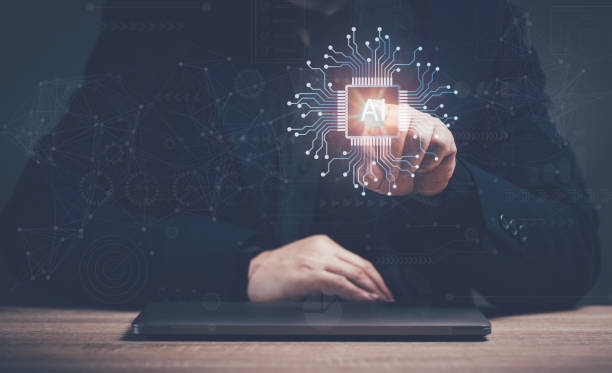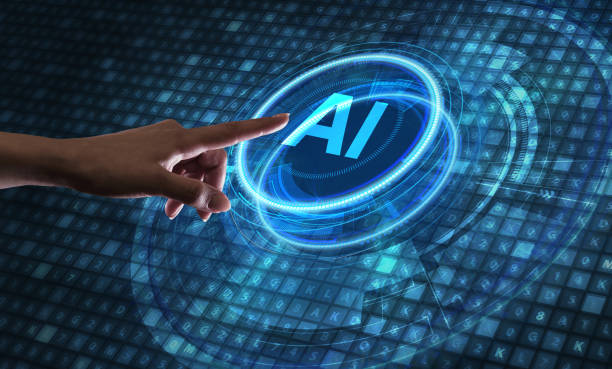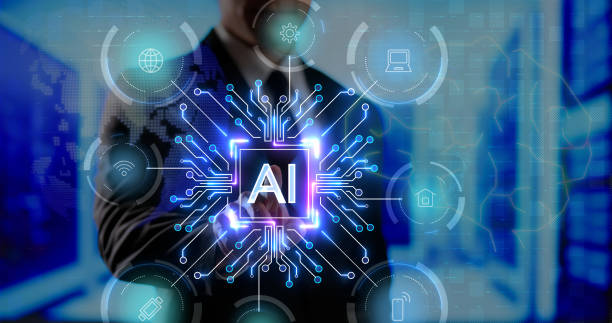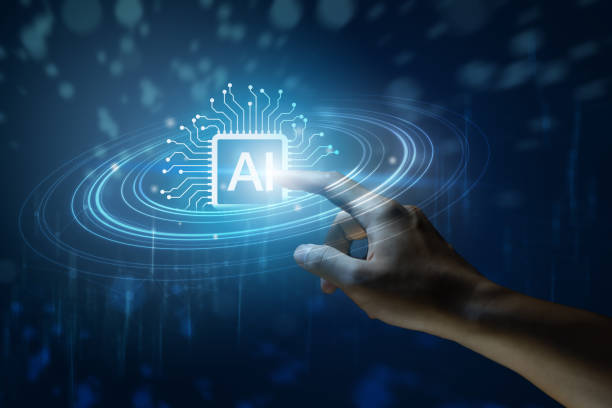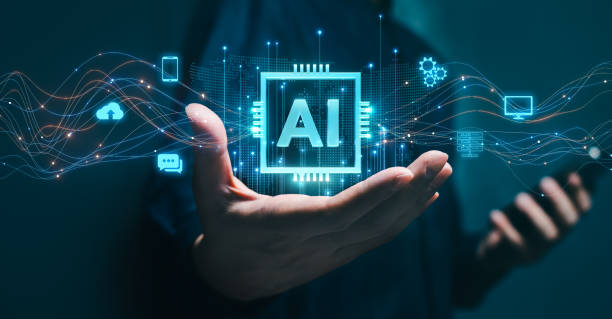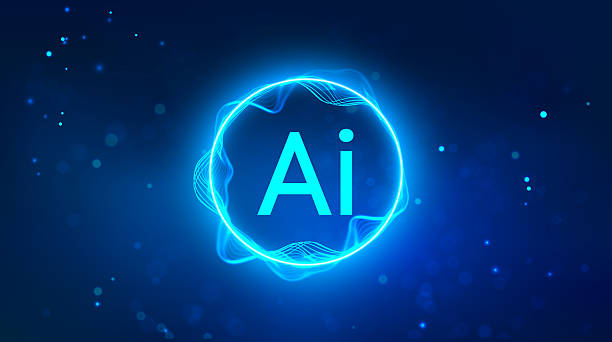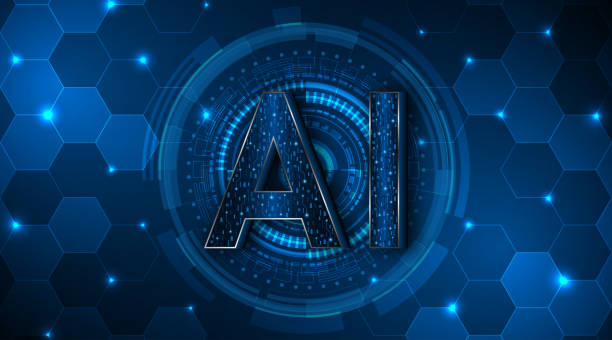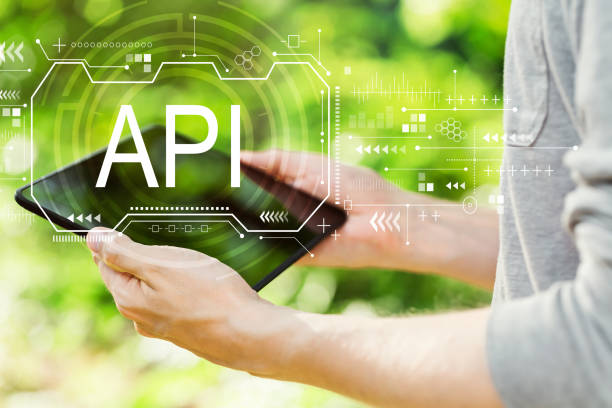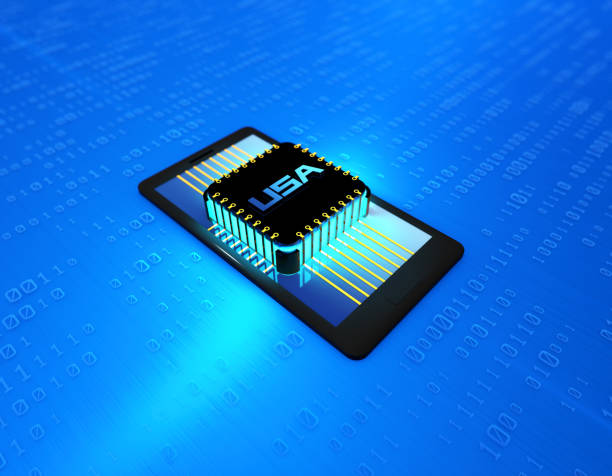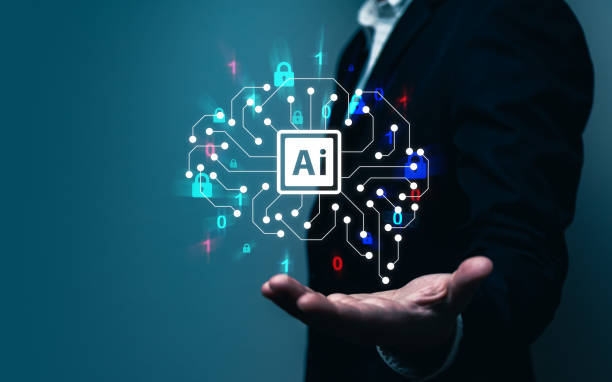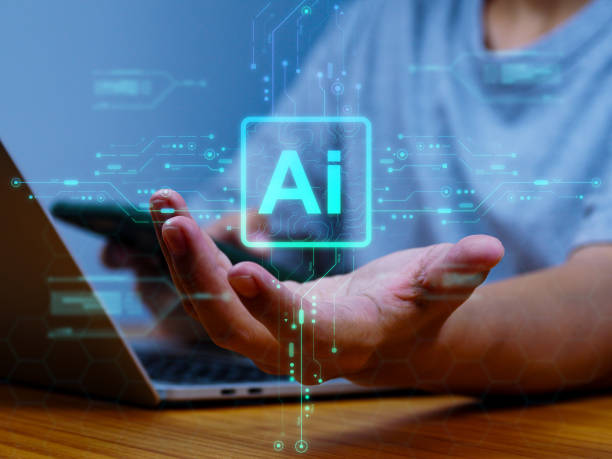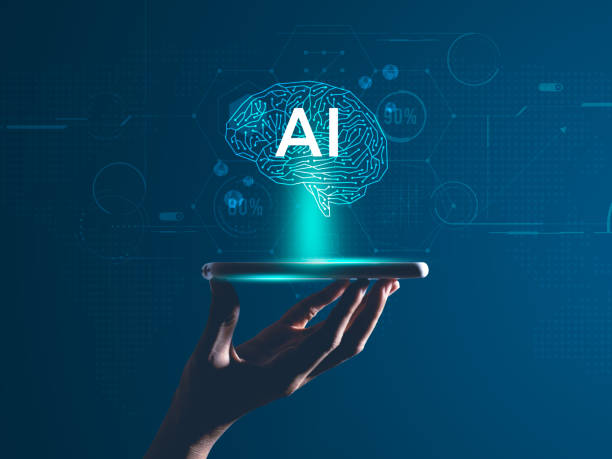What is an Artificial Intelligence Robot? A Simple and Understandable Definition
In today’s world, the term #Artificial_Intelligence (AI) is increasingly heard.
But what is an Artificial Intelligence Robot? In simple terms, an Artificial Intelligence Robot or an AI-based Robot refers to programs or machines that have the ability to perform tasks that usually require human intelligence.
These tasks include learning, reasoning, problem-solving, understanding language, and recognizing patterns.
These robots use complex mathematical and statistical algorithms and models to analyze data and make decisions.
For example, an Artificial Intelligence Robot can diagnose diseases by analyzing large amounts of medical data or provide personalized purchase suggestions by examining customer behavior.
In fact, an Artificial Intelligence Robot tries to increase efficiency and accuracy in performing various tasks by imitating human cognitive processes.
This technology is rapidly advancing and is expected to play a more important role in our future lives.
Did you know that a poorly designed online store can drive away up to 70% of your potential customers? Rasaweb transforms your sales by designing professional and user-friendly online stores.
✅ Significant increase in sales and revenue
✅ Full optimization for search engines and mobile
⚡ [Get free consultation from Rasaweb]
Main Components of an Artificial Intelligence Robot: Architecture and Functionality
An Artificial Intelligence Robot consists of several key components that work together to enable the performance of various tasks.
These components include:
1.
Data: Data acts as the raw material for learning and training an Artificial Intelligence Robot.
The more data there is and the more diverse it is, the better the Artificial Intelligence Robot can recognize patterns and make more accurate decisions.
2.
Algorithms: Algorithms are a set of instructions that tell the Artificial Intelligence Robot how to process data and achieve desired results.
There are different types of artificial intelligence algorithms that are designed for different applications.
3.
Models: Models are mathematical representations of data and algorithms that allow the Artificial Intelligence Robot to predict and make decisions.
4.
Hardware: Hardware includes processors, memory, and other electronic components that provide the processing power needed to run artificial intelligence algorithms and models.
The way an Artificial Intelligence Robot works is that data is first collected and processed.
Then, algorithms are applied to the data to build artificial intelligence models.
These models are used for prediction, decision-making, and performing various tasks.
Finally, the results are presented to the user.
Artificial Intelligence Robots continuously learn from new data and improve their performance.
Amazing Applications of Artificial Intelligence Robots in Various Industries
Today, Artificial Intelligence Robots have found widespread applications in various industries and have created significant transformations.
Below are some of these applications:
1.
Medicine: Artificial Intelligence Robots play an important role in diagnosing diseases, designing drugs, robotic surgery, and managing patients.
For example, an Artificial Intelligence Robot can detect cancerous tumors with high accuracy by analyzing medical images.
2.
Finance: Artificial Intelligence Robots are used in fraud detection, risk management, algorithmic trading, and providing financial advice to customers.
3.
Manufacturing: Artificial Intelligence Robots are used in automating production lines, quality control, predicting equipment failure, and optimizing the supply chain.
4.
Transportation: Artificial Intelligence Robots play a significant role in self-driving cars, traffic management, optimizing routes, and providing smart transportation services.
5.
Customer Service: Artificial Intelligence Robots are used in chatbots, answering customer questions, and providing 24/7 online support.
These are just a few examples of the applications of Artificial Intelligence Robots in various industries.
With the increasing advancement of this technology, its applications are expected to become more widespread and diverse in the future.
| Industry | Application of Artificial Intelligence Robots |
|---|---|
| Medicine | Disease diagnosis, drug design |
| Finance | Fraud detection, risk management |
| Manufacturing | Automation of production lines, quality control |
Different Types of Artificial Intelligence Robots: From Machine Learning to Deep Learning
Artificial Intelligence Robot is actually a general term that includes different types of techniques and methods.
The two main categories of Artificial Intelligence Robots are:
Click here to preview your posts with PRO themes ››
1.
Machine Learning: Machine learning allows Artificial Intelligence Robots to learn from data without explicit programming.
In this method, the Artificial Intelligence Robot identifies patterns by analyzing data and uses these patterns for prediction and decision-making.
2.
Deep Learning: Deep learning is a subset of machine learning that uses deep neural networks with multiple layers to analyze data.
These networks are capable of learning complex and abstract patterns and perform very well in applications such as image recognition and natural language processing.
In addition to these two main categories, there are other types of Artificial Intelligence Robots, which include:
* Expert Systems: These systems use the knowledge of human experts to solve complex problems.
* Natural Language Processing: These systems allow Artificial Intelligence Robots to understand and produce human language.
* Computer Vision: These systems allow Artificial Intelligence Robots to see and interpret images.
Choosing the right type of Artificial Intelligence Robot depends on the type of application and the available data.
Are you worried about the low conversion rate of your online store and not having the sales you want?
Rasaweb is your specialized solution for having a successful online store.
✅ Significant increase in conversion rate and sales
✅ Professional and user-friendly design to satisfy customers
⚡ Ready to transform your online sales? Get a free consultation!
Advantages and Disadvantages of Using Artificial Intelligence Robots
Using Artificial Intelligence Robots has its own advantages and disadvantages.
Below are some of these advantages and disadvantages:
Advantages:
* Increased efficiency: Artificial Intelligence Robots can perform tasks faster and more accurately than humans.
* Cost reduction: By automating tasks, Artificial Intelligence Robots can reduce human labor costs.
* Improved decision-making: Artificial Intelligence Robots can make better decisions by analyzing big data.
* 24/7 availability: Artificial Intelligence Robots can provide services to customers 24 hours a day without interruption.
Disadvantages:
* Implementation cost: Implementing an Artificial Intelligence Robot can be expensive.
* Need for expertise: Developing and maintaining an Artificial Intelligence Robot requires high expertise.
* Ethical concerns: The use of Artificial Intelligence Robots can raise ethical concerns such as job loss and discrimination.
* Learning limitations: Artificial Intelligence Robots can only learn from the data they are given and cannot show creativity in new situations.
Given the advantages and disadvantages mentioned, organizations should implement Artificial Intelligence Robots with care and full awareness.
Challenges in the Development and Use of Artificial Intelligence Robots
The development and use of Artificial Intelligence Robots face numerous challenges, some of which are mentioned below:
1.
Data Scarcity: Artificial Intelligence Robots need a lot of data to learn and function properly.
In many cases, collecting enough high-quality data is challenging.
2.
Ethical Issues: The use of Artificial Intelligence Robots can create various ethical issues, including discrimination, privacy, and accountability.
3.
Security: Artificial Intelligence Robots can be vulnerable to cyberattacks and can be misused.
4.
Interpretability: In some cases, it is difficult to understand how an Artificial Intelligence Robot makes decisions.
This can reduce trust in the Artificial Intelligence Robot.
5.
Specialized Skills: Developing and maintaining an Artificial Intelligence Robot requires high specialized skills that are not available in many organizations.
To overcome these challenges, it is necessary to conduct more research and investment in the field of Artificial Intelligence Robots and develop ethical and security standards for the development and use of this technology.
The Future of Artificial Intelligence Robots: What Expectations Should We Have?
The future of Artificial Intelligence Robots looks very bright and promising.
With the increasing advancement of this technology, it is expected that Artificial Intelligence Robots will play a more important role in our lives and create significant transformations in various industries.
Some of the expectations we can have from the future of Artificial Intelligence Robots include:
1.
Widespread Automation: Artificial Intelligence Robots will be increasingly used in the automation of various tasks and will change many jobs.
Click here to preview your posts with PRO themes ››
2.
Greater Personalization: Artificial Intelligence Robots allow us to fully customize products and services based on our individual needs and preferences.
3.
Intelligent Decision-Making: Artificial Intelligence Robots can make better decisions in various fields by analyzing big data.
4.
More Natural Interaction: Artificial Intelligence Robots allow us to interact with computers and other devices more naturally and easily.
5.
Solving Complex Problems: Artificial Intelligence Robots can help us solve complex and challenging problems such as climate change and incurable diseases.
Of course, to realize these expectations, we need to pay attention to the challenges in the development and use of Artificial Intelligence Robots and find solutions to overcome them.
Artificial Intelligence Robots in Iran: Opportunities and Challenges
In Iran, Artificial Intelligence Robots are also considered as an important and strategic technology.
There are many opportunities for the development and use of Artificial Intelligence Robots in Iran, including:
1.
Specialized Human Resources: Iran has a skilled and talented workforce in the field of Artificial Intelligence Robots.
2.
Diverse Needs: Iran has diverse needs in various fields that Artificial Intelligence Robots can play an important role in addressing.
3.
Government Support: The Iranian government supports the development and use of Artificial Intelligence Robots.
However, there are also challenges in the path of developing and using Artificial Intelligence Robots in Iran, including:
* Lack of Investment: Investment in the field of Artificial Intelligence Robots is not sufficient in Iran.
* Limitations in Access to Data: Access to sufficient and high-quality data is limited in Iran.
* Infrastructure Problems: The infrastructure required for the development and use of Artificial Intelligence Robots is not fully available in Iran.
To take advantage of the opportunities and overcome the challenges, it is necessary to increase investment in the field of Artificial Intelligence Robots, facilitate access to data, and provide the necessary infrastructure.
| Opportunities | Challenges |
|---|---|
| Specialized Human Resources | Lack of Investment |
| Diverse Needs | Limitations in Access to Data |
| Government Support | Infrastructure Problems |
Do you have an online store but your sales are not as you expect? Rasaweb solves your problem forever by designing professional online stores!
✅ Significant increase in conversion rate and sales
✅ Unique user experience for your customers
⚡ Click to get a free consultation with Rasaweb!
Important Points for Choosing and Using Artificial Intelligence Robots
If you are planning to use an Artificial Intelligence Robot, you should pay attention to the following points:
1.
Defining Needs: First of all, you should accurately define your needs.
What problems do you have that an Artificial Intelligence Robot can help you solve?
2.
Choosing the Right Type: There are different types of Artificial Intelligence Robots.
You should choose the appropriate type based on your needs.
3.
Evaluating Data Quality: Artificial Intelligence Robots need high-quality data to learn and function properly.
Before using an Artificial Intelligence Robot, you should evaluate the quality of your data.
4.
Attention to Ethical Issues: When using an Artificial Intelligence Robot, you should pay attention to ethical issues such as privacy and discrimination.
5.
Training and Support: To use an Artificial Intelligence Robot effectively, you should receive appropriate training and support.
By following these tips, you can use an Artificial Intelligence Robot more effectively and benefit from its advantages.
Key Concepts and Common Terms in the Field of Artificial Intelligence Robots
To better understand Artificial Intelligence Robots, it is necessary to be familiar with some of the key concepts and common terms in this field.
Below are some of these concepts and terms:
1.
Algorithm: A set of instructions that tells the Artificial Intelligence Robot how to process data.
2.
Model: A mathematical representation of data and algorithms that allows the Artificial Intelligence Robot to predict and make decisions.
Click here to preview your posts with PRO themes ››
3.
Machine Learning: Allows the Artificial Intelligence Robot to learn from data without explicit programming.
4.
Deep Learning: A subset of machine learning that uses deep neural networks to analyze data.
5.
Neural Network: A computational model inspired by the structure of the human brain.
6.
Training Data: Data used to train the Artificial Intelligence Robot.
7.
Test Data: Data used to evaluate the performance of the Artificial Intelligence Robot.
8.
Accuracy: The degree of correctness of the predictions and decisions of the Artificial Intelligence Robot.
9.
Feedback: Information given to the Artificial Intelligence Robot to improve its performance.
By being familiar with these concepts and terms, you can have a better understanding of Artificial Intelligence Robots and use them more effectively.
Frequently Asked Questions
| Question | Answer |
|---|---|
| What is an artificial intelligence robot? | It is a robot that uses artificial intelligence capabilities to understand the environment, reason, learn and make decisions in order to perform complex tasks independently. |
| What is the main difference between a regular robot and an artificial intelligence robot? | Artificial intelligence robots can learn and adapt to their environment, while regular robots usually operate based on fixed and pre-determined programming. |
| In what areas are artificial intelligence robots used? | In areas such as industry (production lines), medicine (robotic surgeries), services (customer support, smart vacuum cleaners), exploration (space and underwater) and entertainment. |
| How do artificial intelligence robots learn? | They acquire new skills through machine learning algorithms and deep learning, by analyzing large data and identifying patterns. |
| Can artificial intelligence robots have emotions? | Currently, no. They can identify or simulate emotions, but do not have the real experience of emotions like humans. |
| What are the most important advantages of using artificial intelligence robots? | Increased productivity, reduced human error, performing dangerous or repetitive tasks, and providing innovative and efficient services. |
| What challenges exist in the development of artificial intelligence robots? | The need for large and high-quality data, the complexity of algorithms, ethical issues, cybersecurity and the high cost of research and development. |
| Are artificial intelligence robots dangerous to humans? | By following safe design principles and ethical regulations, no. Concerns are more related to social and economic impacts such as changes in the labor market. |
| What is an example of an artificial intelligence robot in everyday life? | Smart vacuum cleaner robots (such as Roomba) that automatically map and clean the house, or smart voice assistants (such as Siri and Alexa). |
| How is the future of artificial intelligence robots predicted? | They are expected to become smarter, more autonomous, and able to interact more complexly with humans, and play a more prominent role in industry, medicine, transportation, and everyday life. |
and other services of Rasa Web Advertising Agency in the field of advertising
Intelligent Website Development: Professional optimization to increase website traffic by customizing the user experience.
Intelligent Social Media: Transform website traffic with the help of custom programming.
Intelligent Link Building: Designed for businesses looking to manage campaigns by using real data.
Intelligent Website Development: A fast and efficient solution to increase sales with a focus on custom programming.
Intelligent Marketing Automation: A combination of creativity and technology to attract customers by optimizing key pages.
And more than hundreds of other services in the field of internet advertising, advertising consulting and organizational solutions
Internet Advertising | Advertising Strategy | Advertorial
Resources
Artificial Intelligence Robots: The New Generation of Experts
,Smart Robots and Artificial Intelligence
,What is a Smart Robot? Introducing the Uses, Types and Advantages and Disadvantages of a Smart Robot
,What is an Artificial Intelligence Robot? Definition + Applications of Artificial Intelligence Robots
? Do you want to have a powerful online presence? Rasaweb Digital Marketing Agency, with expertise in fast website design and comprehensive digital solutions, guides your business to success.
📍 Tehran, Mirdamad Street, next to the Central Bank, Southern Kazerun Alley, Ramin Alley No. 6
“`

